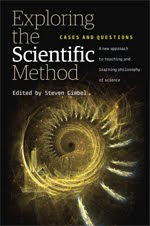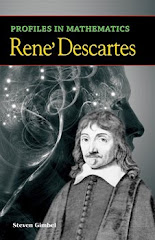Saying Thank You For a Real Good Time
Someone there best described it as fantasy camp for Deadheads. The conference, Unbroken Chain: The Grateful Dead in Music, Culture and Memory, was truly amazing.
The conference opened on Friday morning with Rebecca Adams introducing her sociological studies on the Deadhead community. Doc Tour is the pioneer of Dead Studies, the first person to seriously do solid academic work on the scene, famous for taking her class on tour. The question she asked was how a community with no geographical home could survive for so long. Among the factors she identifies as the glue were shared love of the music, communal beliefs in concepts like synchronicity, a shared sense of being apart from the larger culture, but first and foremost, friendship. Touring created friendships that were deep and lasting, even among those who only saw each other on occasion by fortunate happenstance. It was the perfect opening as it simultaneously put out there exactly what makes the community so fascinating and wonderful, but also showed how smart, technical academic work could be done without stripping it of its magic, how legitimate analysis does not necessarily mean being dispassionately removed from it, something that would keep someone from getting it.
During the question and answer period, Rebecca was asked several questions about the uniqueness of the community and what other groups might compare. Conversation began around the fans of other contemporary bands and sports teams, but turned historical with Rebecca suggesting that a similar understanding might be set out for the Roma people of central Europe and someone else suggested early Christians at which point someone asked whether we ought to be worried that in a thousand years there might be killing in Jerry's name.
Closing the first session, at the request of Mountain Girl (Jerry's wife Carolyn Garcia), everyone joined together to sing Uncle John's Band led by the Kind Buds, a fantastic acoustic duo from Vermont. Hearing a couple hundred folks all singing "ain't no time to hate" raised the hair on the back of my neck. It really set the tone for the weekend.
From here, there were two to three simultaneous sessions, so sadly I can only report on those I attended (the group mind thing only works so well...). David Lemieux, the keeper of vault, discussed the moving of the Dead's extensive music archive from the Dead's own facility in Northern California to Warner Brothers' in Los Angeles. He actively sought to allay fears that the move is the disaster some portend. He says that the physical vault itself is a better one, that only two WB people have access and that it is a fine place where everything is safe and sound. Herb Greene then gave a stunning presentation of his photographs of the band (and others). His portraits are iconic and it was incredible to see shots from the same sessions as the ones that we all have burned into our minds. This one of Pigpen really got me.
Lunch brought with it a talk by Dan Healy, the master of the soundboard for so many years. He was sweet and funny, discussing the way that he was hired when he told Garcia that something had to be done to make the vocals clearer than the house PA systems were doing. Jerry told him, fine, do it. From there, he began experimenting with the electronics, working to create new sorts of amps since the commercially available technology had not advanced since the 1920s. The new ideas the Dead sound people were developing were poo-pooed by the industry, but once the wall of sound (described by Healy as "a pain in the ass") came around, things started to change and by the end of the run of the wall of sound, commercially available technology had caught up with the Dead's stuff and they were able to go back to doing things the easy way.
The next session brought together Natalie Dollar's discussion of Deadhead linguistic conventions, especially the way location gets referred to. Chaone Mallory looked at the question of the relation between ecological awareness and being being a Deadhead. Was there a implicit commitment to the environment within the movement? David Gans wondered aloud why he was there, but, of course, it was to do what he does so well, to call bullshit whenever something smells wrong to him and to provide his sharp and sweeping perspective on the scene.
The late afternoon session examined spiritual dimensions of the movement. It was chaired by Stanley Krippner, the psychologist who has worked on dreams and consciousness since the early 60s and was the one who conducted the famous dream/ESP experiments at the Dead shows in Port Chester in 1971. He discussed his relationship with the band members, including the use of hypnosis on the drummers to aid in their performative unity. Mary Goodenough discussed the dual notions of light and dark in the Dead, of being in and out of the Garden. It was a point picked up by Steve Silberman who also thought that the spiritual ecstasy experienced by so many at the shows was in part a response to the danger -- not knowing if you will in fact get your next meal, fear of local authorities -- that the middle and upper class kids on tour generally had never known in the safe bubble of their upbringing. John Dwork discussed the way that music and movement could be used to induce transformative experiences. Mountain Girl was asked when the Dead first realized that there was a spiritual element of the experience of the audience. She said that the first person to note it was Bill Graham and the when he put it that way, the band's uniform responses was "Like church? Ewwwww."
Dinner that night was followed by Dennis McNally's keynote address that examined how one could go from Ph.D. holding historian to rock publicist. He reflected wistfully on the way for years and years, no matter how much he schmoozed, no matter how clearly he tried to explain the depth of what was happening, no matter how much he tried to prep reporters from local rags to the New York Times, all he could ever get was "look at these damn dirty hippies" stories out of them. That is until Jerry's collapse from diabetes at which point the narrative changed to the Dead as beloved, if not quaint, American icons.
That night we were all wowed by The American Beauty Project which brought together long time Dylan sideman Larry Campbell, the amazing Catherine Russell, Jim Lauderdale, and Ollabelle along with David Gans to perform arrangements of American Beauty and Workingman's Dead. It was wonderful. The highlight for me was "Easy Wind," a tune I, of course, never got to hear.
Saturday arrived plenty early with the philosophy session following breakfast. After my stand-up silliness, Stan Spector gave a very clever discussion of Dead anti-rationalism through the lens of Nietzsche. I don't know how I never heard "Reason tatters, the forces tear loose from their axes" as a repudiation of Descartes before (who championed rational thought and introduced analytic geometry with its x and y axes -- Cartesian coordinates) but Stan has changed Dark Star for me forever. Jim Tuedio also focused on the Dead as performative and bodily, indicative of the reuniting of the body and life, where chance replaces reason allowing us to move beyond ourselves. He will forever be remembered as the author of the sentence: "Until I heard the band live, three years later, by which time I had stumbled onto a used copy of American Beauty and invested in a brand-spanking-new copy of Europe 72, I had no idea a song could manifest a life of its own, or that an entire crowd of transfixed auditory surveillance instruments could modulate to identical frequencies of dancing attunement without the slightest absence of personal engagement." I really love that sentence.
Stnaley Krippner and Sidian Morningstar, grandson of Rolling Thunder, then discussed the life of Rolling Thunder and his interactions with the band as well as his healing powers as a medicine man.
Lunch brought a panel with Dan Healy and Mountain Girl reflecting on the trip to Egypt until the arrival of Bill Walton whose joy turned the conversation inside out. He spoke of bringing the entire Celtic team to see the Dead in Boston -- with the exception of Danny Ainge, who wife wouldn't let him go. They had a special area on stage, but curtained off so the crowd couldn't see them. As the show is about to start, Jerry looks up at Larry Bird, winks, and mouths to him "This is what WE do," and proceeded to blow their collective mind.
After lunch was a session on the Dead and gender -- begun with a rousing full room sing-a-long to women are smarter. Rachel Gallop led a conversation on her research about the role and representation of women in the counter-culture. It was an interesting take, arguing that you cannot apply contemporary feminist analysis to the hippie chicks without anachronism sneaking in. Mountain Girl then reflected back on being a female Merry Prankster (a very egalitarian group where everyone had their turn to shop and cook, although she never did, to her regret, get to drive the bus), a brief period as a homeless mother, and then the woman of the house for the Dead's communal home at 710 Ashbury where she did all the cooking and "womanly" work. She reflected on her joy at Hunter's return to the gang at which point the songs became beautiful and less overtly sexist than the old rollicking blues standards. She was sweet, smart, and open in a touching way. What rounded it out though, was the response of Rony Stanley, Owsley's former wife, who discussed the crafts, the bead making, they would all do together, the way that even in a situation that was patriarchal the women still found ways to be creative and joyful. It was the session that most touched me.
The last panel of the conference brought together Christian Crumlish and Steve Silberman looking technology and Deadheads. It is amazing how the advance of computers and the internet at every step included Deadheads in significant places. Indeed, a running conversation throughout the weekend in several different informal conversations was why there are so many Deadheads with professional interests in physics.
That night Dark Star Orchestra performed 12-12-78. It was my first DSO show, something I had been putting off because I worried that a pale representation would feel hallow, but having the parking lot of the conference, walking to the show with my family of friends, it did recreate something I really thought I would never feel again.
A few memorable comments:
Stan in the hotel, getting off the elevator and seeing the "ice/vending" sign, said "Man, I expected to see someone selling t-shirts."
David Dodd tells me that Ripple will be in the next version of the Unitarian Universalist hymnal.
I must thank all those involved in putting it together -- especially Michael Grabscheid, Wesley Blixt, Rebecca Adams, and Nick Meriwether. thank you for all of your time effort, and care. It was truly a once in lifetime experience...unless you want to do it again...





|